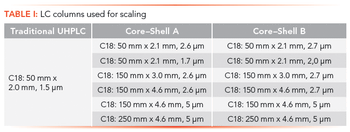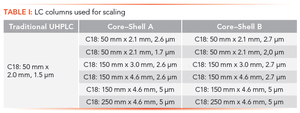
The use of ultrahigh-pressure liquid chromatography (UHPLC) is now commonplace among pharmaceutical laboratories. However, until depreciation cycles replace traditional high performance liquid chromatography (HPLC) systems that operate at a maximum pressure of 400 bar, the advantages of UHPLC cannot be realized worldwide. Thus, product methods developed using UHPLC capabilities cannot directly transfer these methods to receiving laboratories without qualified UHPLC availability.




